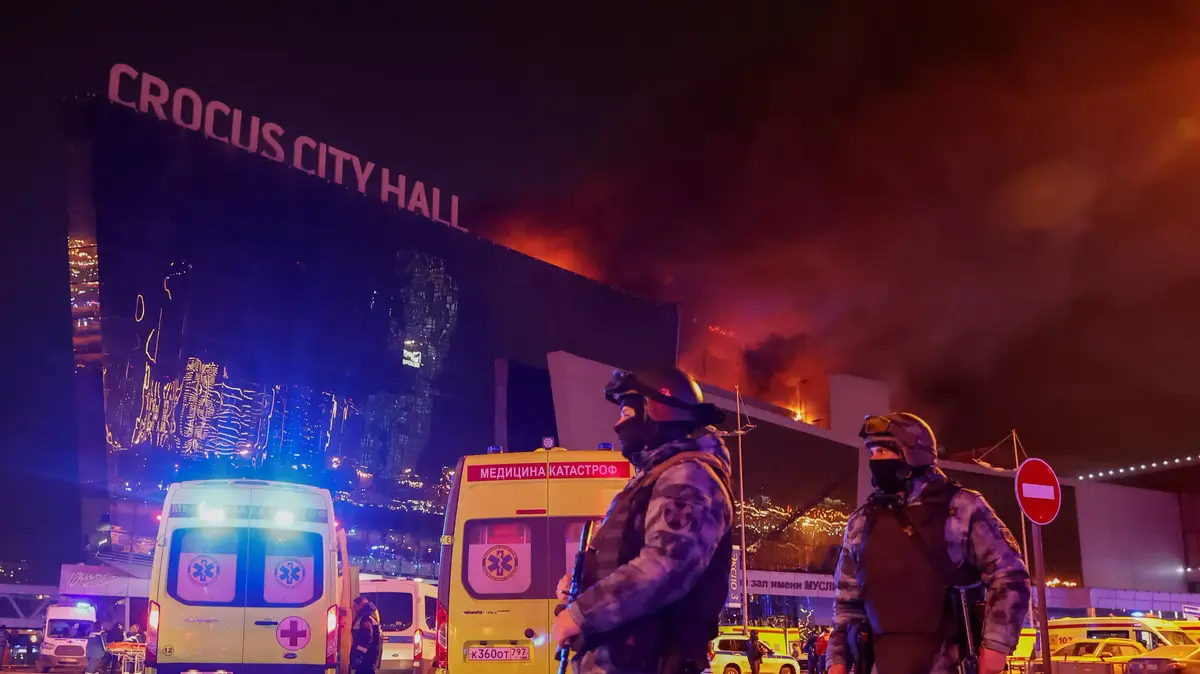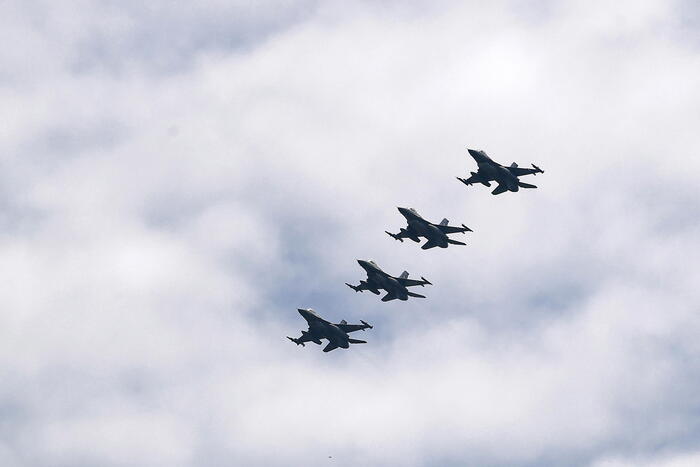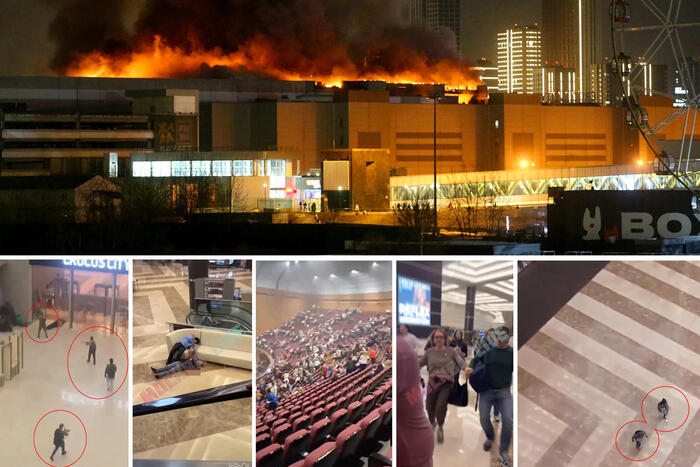Video: Ukrainians appear to take Russian prisoners 2:33
Kyiv, Ukraine (CNN) --
The scenes are chaotic: Russian tanks veering wildly before exploding or driving straight into minefields, men running in all directions, some on fire, the bodies of soldiers trapped under the tanks.
Russian military bloggers call it a fiasco, or worse.
These scenes were recorded by Ukrainian military drones over the past two weeks around the town of Vuhledar in Donetsk in eastern Ukraine, where successive Russian assaults have failed.
Russian soldiers denounce an "incomprehensible battle" in which 300 people would have died in Donetsk
The Vuhledar debacle suggests chronic failures in command and tactics by the Russians as they prepare for a spring offensive.
If repeated elsewhere on the long military front of Donetsk and Luhansk, such failures could jeopardize the Kremlin's plans to seize more territory.
Some twenty videos geotagged by CNN show basic tactical errors in a flat, open area, where Ukrainian observers on higher ground can direct artillery strikes and where minefields aggravate Russian casualties.
Satellite images show the craters left by heavy artillery shelling in the surroundings of Vuhledar.
Credit: Maxar Technologies
One video shows a tank entering a minefield and exploding, almost inadvertently followed by an infantry fighting vehicle suffering the same fate.
Others show Ukrainian drones dropping small explosive charges on static tanks in the open field, and a graveyard of abandoned armored vehicles.
advertising
At least two dozen Russian tanks and infantry vehicles have been disabled or destroyed in a matter of days, according to the videos, released by the Ukrainian military and analyzed by CNN and military experts.
Satellite images show intense patterns of hits along the tree lines where the Russian tanks tried to advance.
The Russian Defense Ministry has insisted that the assault on Vuhledar, where the 155th Marine Brigade is prominently involved, is proceeding as planned.
Speaking taped for a Sunday television show, Russian President Vladimir Putin said that "the marines are working as they should. Right now. Fighting heroically."
But the leader of the Russian-backed self-proclaimed Donetsk People's Republic (DPR), Denis Pushilin, acknowledged on Friday that the area was "on fire", saying that "the enemy continues to transfer reserves in large quantities, and this slowed down the release of this settlement."
Members of a Ukrainian artillery unit chop firewood while waiting near Vuhledar in Donetsk.
Credit: Chris McGrath/Getty Images
Vuhledar was built for the nearby colliery (the name translates to "gift of coal") and sits on the surrounding plains.
Its high-rise buildings provide its defenders, primarily the Ukrainian 72nd Mechanized, a significant advantage, as well as reinforced underground cover.
Military historian Tom Cooper, who has studied the battle for Vuhledar, describes it as "a great, tall fortress in the middle of a flat, empty desert."
The city has become a lynchpin of conflict in eastern Ukraine.
Russian forces have been trying to take it for three months.
Moscow's victory here would make it more difficult for the Ukrainians to close a nearby railway linking Donetsk to Russian-occupied Crimea and allow the Russians to launch a "hook" to the north as part of their expected spring offensive.
In November, an ill-conceived plan to take Vuhledar caused heavy casualties and nearly sparked a mutiny among the men of the 155th Marine Brigade.
Critics of the Russian military high command say the handling of the latest offensive is even worse, with one military blogger describing it as a "shameful debacle".
Cooper claims that the Russians built a formidable force around Vuhledar, "let's say, a total of about 20,000 soldiers, 90 MBTs [main battle tanks], maybe twice as many IFVs [infantry fighting vehicles], and about 100 pieces of artillery".
"But the attacks launched in the last week of January were fatally flawed," he said.
"They were advancing a relatively narrow route, all the time in full view of Ukrainian sentries posted on top of Vuhledar's tall buildings, and now faced some 500 meters of empty ground on the eastern side of the city," he wrote. Cooper on his blog.
"Ukrainian artillery not only inflicted heavy losses on the advancing units, but also reached their rear, cutting off both their supply links and potential retreat routes."
"Just survive": Wagner's fighters tell the horrors of the battle in eastern Ukraine
"Only idiots attack head on"
Several prominent Russian military bloggers have unreservedly criticized the Vuhledar offensive.
"They were shot like turkeys at a shooting range," said former DPR Defense Minister Igor Strelkov, who has become a strident critic of the campaign.
Strelkov, also known as Igor Girkin, added on Telegram that "a lot of good T-72B3/T-80BVM tanks and the best paratroopers and marines were wiped out."
In another message on Telegram, Strelkov wrote: "Only idiots attack head-on in the same place, heavily fortified and extremely uncomfortable for attackers for many months in a row."
Russian military bloggers have tens and sometimes hundreds of thousands of subscribers to their Telegram channels.
They have been highly critical of previous episodes of the campaign.
Satellite images show intense impact patterns where the Russian attempts attempted to advance.
Credit: Maxar Technologies
One of them, Moscow Calling, said at the weekend that moving tanks and infantry fighting vehicles in "thin columns" near Vuhledar was asking for trouble.
The blogger claimed that Russian units in the area lack information because commanders have not integrated intelligence gathering into battlefield decisions.
On the contrary, he said: "All this was implemented or is in the process of being implemented by the Ukrainian armed forces."
Calling claimed that the aging T-72 tanks deployed at Vuhledar lack upgrades that would improve the driver's range of vision.
That may help explain several cases in which Russian tanks appeared to get entangled or blindly reverse.
"How are blind and deaf tanks, armored personnel carriers, with equally blind and deaf infantry supposed to fight without columns? And then how to coordinate actions if there is no communication or situational awareness?" wrote.
"If the Russian Armed Forces try to disperse, they will shoot each other, because they don't understand who is in front of them."
Several Russian commentators have called for the removal of Lieutenant General Rustam Muradov, commander of the Eastern Grouping of Forces.
Muradov was in command in November when the men of the 155th protested that his tactics had caused disastrous losses.
Fighting has intensified around Vuhledar in recent weeks.
Credit: Chris McGrath/Getty Images
Another blogger said that the Russian forces were doomed to repeat their mistakes if those commanders remained in their posts.
In an expletive-laden post, the pro-Wagner Gray Zone Telegram channel said of Muradov: "This coward lies down at the checkpoint and sends out column after column until the commander of one of the brigades involved in the assault on Vuhledar He's dead on the contact line."
The dead commander was a special forces colonel, Sergey Polyakov, according to unofficial Russian sources.
Another Russian blog with more than 500,000 followers said of Muradov's team: "These people killed a significant number of personnel and equipment [in November] and took no responsibility. Then, with the same mediocrity, they started storming Ugledar [Vuhledar] Impunity always engenders permissiveness."
Doubts about the formation of the troops
But the Washington-based Institute for the Study of War (ISW) says bad leadership is only part of the problem: "highly dysfunctional tactics are far more indicative of the fact that the 155th Naval Infantry Brigade is probably composed of poorly trained mobilized personnel of poor command."
The UK Ministry of Defense reported on Sunday that the increase in Russian casualties at places like Vuhledar "is likely due to a number of factors, including a lack of trained personnel, coordination and resources across the front."
High-ranking Russian officials are defecting.
This man is helping them
Ukrainian military officials say there is a random mix of Russian forces in the Vuhledar area, including professional units, recently mobilized ones, DPR militia and infantry from a private military company called Patriot, said to be close to the Ukrainian Defense Ministry. Russia.
The setbacks around Vuhledar do not bode well for a broader Russian offensive.
The ISW assesses that "they have probably further weakened the Russian ultranationalist community's belief that Russian forces are capable of launching a decisive offensive operation."
However, some Ukrainian units have run out of ammunition as the pace of Russian operations increases.
"The key to success on the battlefield is effective fire damage, which requires an adequate amount of weapons and ammunition," Ukrainian forces commander Valeriy Zaluzhnyi said on Saturday.
According to analysts, the challenge for the Ukrainians is to resupply front-line units with shells and anti-tank missiles quickly enough.
Russian forces still have a clear advantage in firepower.
On Saturday they dropped a barrage of thermobaric bombs on Vuhledar, a reminder that they are more capable of inflicting destruction than taking territory.
War in UkraineNews from Russia









